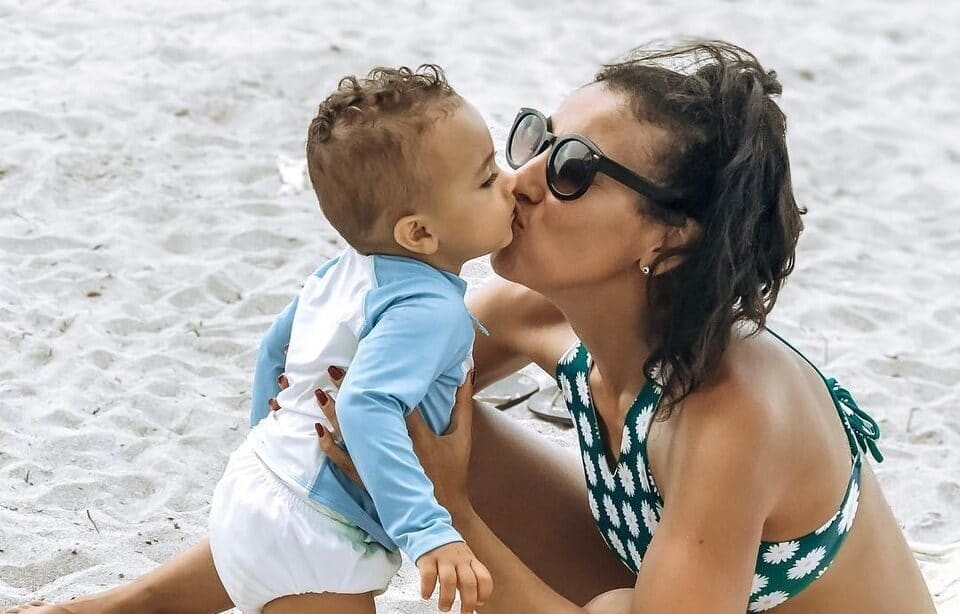How to conquer spring cleaning and home organization, with Of Space + Mind

We talked to professional organizer Ashley La Fond about her best home organization ideas and tips for spring cleaning with kids.
Spring has sprung, which means it’s time to round up the family and start chipping away at spring cleaning. The annual home organization ritual is particularly special in 2021, after a year of hibernation in our homes. Now that it’s becoming safer to venture outside, it’s a good time to take stock of what we’ve accumulated during the COVID-19 pandemic and what we want our homes and lives to look and feel like.
We consulted Ashley La Fond, founder of New York-based professional organizing company Of Space + Mind, for her best advice and ideas for home organization when you have kids.
Everyone is suddenly into organizing every corner of their home, including myself. Why do you think this is happening now? Is it pandemic-related?
Being forced indoors due to the pandemic has put our homes under a microscope. Our apartments and houses have become more than just a place where we eat and sleep–they are now where we work, do school, play, zoom, cook and eat three meals a day. We’re expecting more from our homes, which has forced us to take a look at how things are organized (or not!)
What’s the first room or area we should be tackling when starting to do a spring clean-up?
When spring cleaning, choose an area of your home that is going to have the biggest impact on your day-to-day and start there. Opt for a space that isn’t too large, or doesn’t feel too overwhelming, so you can create good momentum and feel the effect of your work quickly. If you work from home and find your office area has become cluttered and distracting, that’s a great place to start. Or if your kids’ play area is overrun with toys and cleaning up feels impossible, focus there. The kitchen is the heart of the home–if yours feels like it lacks flow and cooking has begun to feel like a chore, tackle that area.
In your experience, what are the products people accumulate that we really don’t need much of?
The biggest culprits of accumulation we see are clothing, paper, beauty products and cords. In the pandemic, food and cleaning supplies are other things we’ve seen people stockpile in excess! Also, people seem to love collecting mugs, so we see a lot of those as well. Start by collecting everything you have in a category (e.g. skincare, cords, sweaters) and edit from there. When you see how much you have, it’s easier to be realistic about what you actually need (no one needs 100 iPhone cords!) Once you’ve edited to a reasonable amount, employ a one-in-one-out policy to prevent it happening again.
What tips do you have for short, 5-to-10-minute clean-ups? What about when you have 30-60 minutes?
We are big fans of the 10-minute tidy! We like to set an alarm and do this once a day to reset and get everything back in its place. This is a great routine to do in the evenings so you wake up to a clean slate. If you have a bit more time–30 or even 60 minutes–then the key is to be intentional about the time and decide what you want to focus, so you can actually complete a task. Maybe that’s folding and putting away laundry, filling your canisters with backstock, vacuuming the floors, putting away dishes or opening mail and sorting through papers. The key is not to spread yourself too thin: Pick one or two things you want to get done and direct your energy there so you can feel accomplished at the end of your session.
What’s the best way to organize toys? And how do you suggest getting children involved in cleaning up?
The key to organizing toys, craft supplies and games is to use small, durable bins that hold up to tiny hands. These are a great example and come in a few sizes. Organizing toys and games by activity or type allows playtime to be more focused and makes tidying up easier! Get kids involved in cleanup by making it fun and doing it together. Put on music, create a song for tidy time or set a timer to create some healthy competition and make it feel like a game.
Baby clothes are tiny! What’s the best way to store them?
Baby clothes–like all other items–should be file folded! This helps you see what you have, use drawer space more efficiently, and makes it easier to select items without ruining all of your folds. Use drawer dividers or inserts to create separation and containment, and add labels so all caregivers know where to find things and can easily put laundry away!
Do you have any tips for making getting out the door with school-aged kids easier?
The key to smooth mornings is a good night routine. Spend 15 minutes at the end of each day to do anything and everything that can be done in advance to make getting out the door quick and efficient. Pick out kids’ outfits and lay them out for the morning, pack lunches, prep school bags and leave them by the door, preset the coffee machine, as well as plan and lay out breakfast materials. As a mom, there’s also seldom any time for yourself in the mornings. Wake up before the kids to give yourself some quiet time, and a chance to get ready before they wake up. This will help you ease into the day and feel more in control of your mornings.
Are there any space-saving organizational products you recommend for parents in small living spaces?
When it comes to small spaces, be intentional about what you bring into your home and how you set up your space! Be selective when it comes to furniture–opt for multi-functional pieces that are both beautiful and have great utility. This rack is a great example of that–it can be used to store bins, baskets, or shoes so it can work in many different spaces. The backs of doors, ceiling height and wall space are often overlooked as opportunities for storage. Add hooks to doors and walls, wall shelves or a system unit to the back of a door to create more storage!
I feel like organizing baby clothes as he grew out of them was easy with one baby. Once we added another, it went off the rails. I have bags and bags of clothes now and am too intimidated to start. How do I organize my mountain?! It’s overwhelming.
We totally get it, it’s easy to feel stuck and unmotivated when a task seems overwhelming to begin with! Following this simple method will make it feel way more manageable. Start by carving out some time so you can focus on it, without feeling rushed. Put on a podcast, call a friend or whatever it takes to create an environment that makes it feel enjoyable, rather than a chore. Assuming you want to hold onto clothes for your next child (or future growth), here’s what to do:
- Organize belongings by age group: Sort and categorize clothes, shoes and accessories into piles, by stage (NB, 0-3 months, 3-6 months, etc.).
- Go through each pile and edit, edit, edit: Donate anything you don’t love, toss belongings that are worn, damaged or stained, or put aside pieces you might want to pass onto family or friends. Be ruthless–if you find snaps annoying, received something as a gift but never liked it, or an item is hard to use or wear, let it go. Trust us, if you didn’t like then, you won’t like it in the future!
- Store in weathertight bins or sealable storage bags: Fold clothes and label each bin by age to make it easy to access in future.
- Create an outgoing system: To make your system easy to maintain, add two bins to your kids’ closets for outgoing items – one for keep/store pieces and one for donation items. As your kids outgrow something, or you decide something is not worth keeping, put it straight into its designated bin. When the bins are full (or your kid has outgrown a size entirely) it’s time to store everything in that size and make a donation run!
You can follow Of Space + Mind at @ofspaceandmind on Instagram and on their website.


































